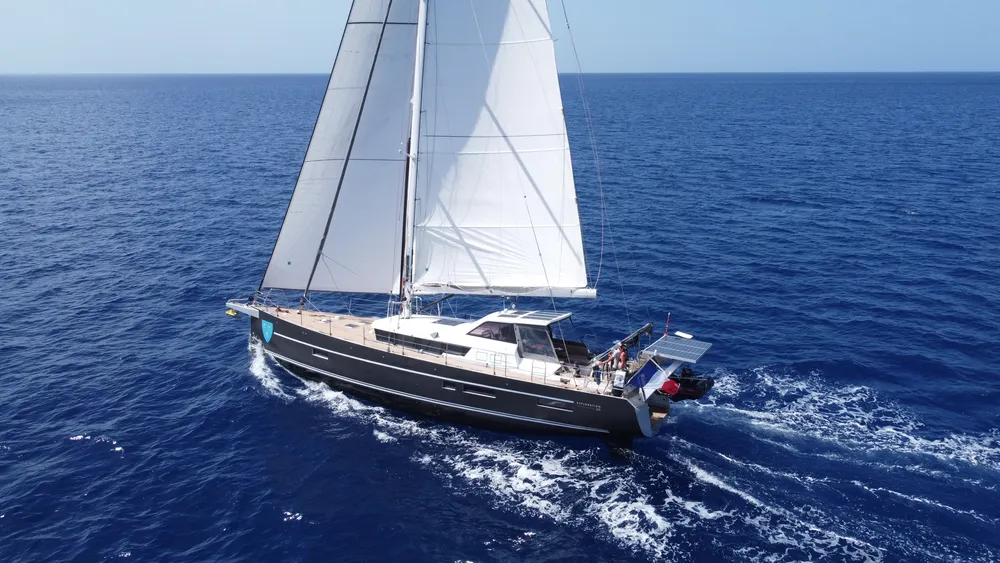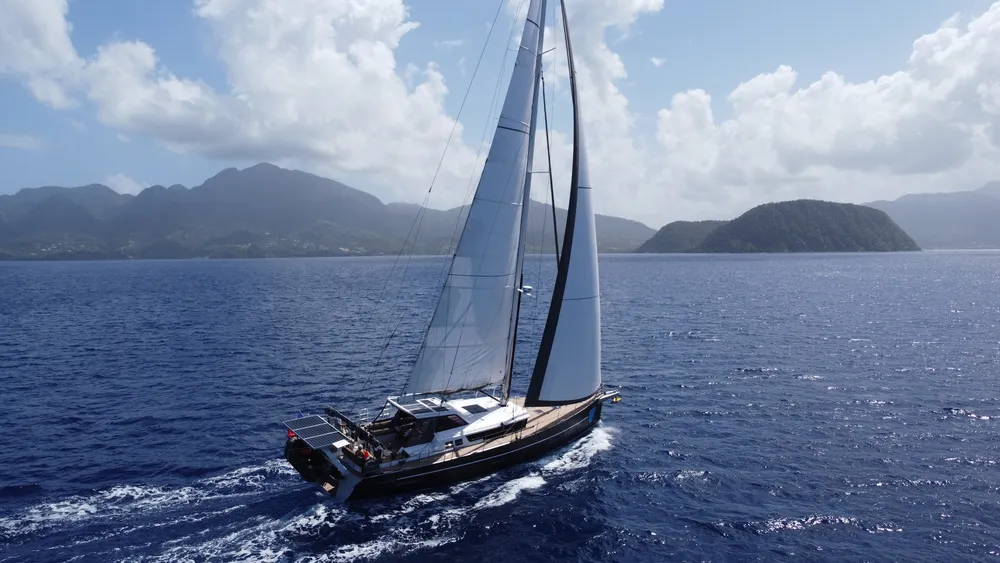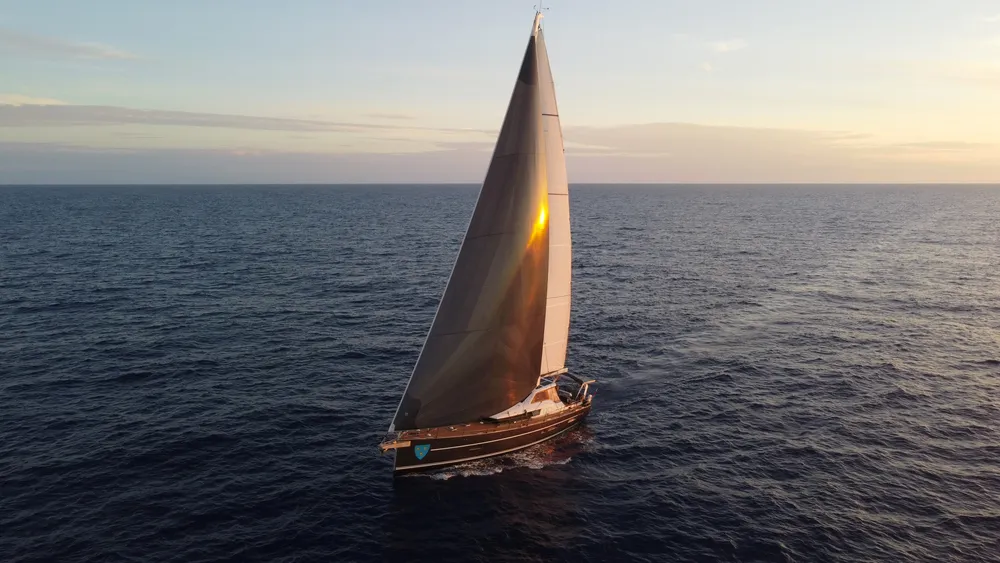A west-to-east crossing of the Atlantic, 2,434 miles between Martinique and the Azores, is an exercise you must have done at least once in your life as a sailor. The object of many anxieties, in the right season it can take place in ideal conditions.

Sometimes even before leaving Europe, often as soon as passing the Canaries or Cape Verde, and invariably when arriving in the West Indies, many crews are left in doubt. Should the boat be sold on the spot? Opt for a cargo return? Put the children, or even the whole family, on the plane and hire a skipper? It’s true that it’s no longer the trade winds that we’re tackling, but a much more tortuous path. While cyclones are not normally a threat in springtime, and North Atlantic lows rather reasonable, the game is still to sail upwind in a still powerful trade wind and official swell provider as far as Bermuda, then bend the course following the wind rotation towards the Azores, all without falling into either hopeless calms or overly hollow lows. For this first transatlantic race “in the wrong direction”, I’m lucky enough to be aboard an oversized Garcia Exploration 60, a solid all-aluminium dinghy, perfectly insulated, with a windshield and a long rigid bimini protecting the cockpit, and a deck saloon with vertical windows, even reversed at the bow, offering a 270° view from inside. Invisible but equally important are the watertight bulkheads fore and aft, the two rudders protected by skegs, and the anchor locker capable of swallowing 100 m of chain set back at the foot of the mast. The result is optimized weight centering and improved performance at sea.


First days at sea
There are four of us on board, with as many double cabins and three bathrooms, so we won’t suffer from promiscuity. We’re now ready to set sail, less than 36 hours after landing in Fort-de-France. A quick stop at the fuel pontoon to refuel and we’re ready to leave the cul-de-sac of Le Marin. Just off Pointe des Boucaniers, we hoist the mainsail and unfurl the genoa. All manoeuvres are carried out from the cockpit, using large electric winches. Once we’ve passed the islet Cabrits, which marks the southern tip of Martinique, we set off north-north-east, close-hauled on starboard tack. For three days, the wind oscillated between 12 and 20 knots. The boat’s speed is remarkably constant, as long as the sail plan is adapted to wind variations. Excessive heeling is the best indicator of this on an integral dinghy. Full genoa and mainsail at the bottom of the range, one reef and genoa in the middle, one reef plus staysail as soon as the wind reaches 20 knots, and the boat runs like a train on rails, always between 7 and 9 knots. Three days “on the edge” is enough time to get used to the boat and to get the stomachs of even the most unmoored sailors used to it.
During this first, rather sporty, phase, Laurent took refuge in the saloon, abandoning his large owner’s cabin forward of the mast, as it’s hard to settle in despite the presence of solid anti-roll boards. I slip into the skipper’s cabin under the saloon. Very low and in the middle of the boat, it’s undoubtedly the most comfortable in rough seas. But at 4:00 a.m. on the fourth night, the wind dropped. Six knots of wind are not enough to shift the 34 tons of the Exploration 60, especially with the long Atlantic swell still raging. The 230 hp engine is called upon to the rescue for the first time. 7.2 knots cruising speed at just 2,000 rpm, fuel consumption is still 12 l/hour. It’s a good thing we fuelled up before setting off, because if we want to seize the slightest opportunity to make headway under sail, we won’t hesitate to rev the engine in the flats. At least, that’s what the routing software we run regularly predicts. Yes, the Starlink revolution has taken hold on board, and we’re enjoying downloading Grib files several times a day. In any case, even without the 24 hours of motoring ahead of us, between the 1,600 W of solar panels and the generator, we’ll always keep the lithium batteries at over 60% charge level. It’s worth noting that consumption of the refrigeration units drops drastically as soon as the outside temperature drops below 30 degrees. The galley, on the other hand, is gas-powered, and the 13-kilogram bottle in service lasts the entire crossing, although it’s severely overtaxed with lemon tarts, roast chicken and even a 7-hour leg of lamb… very good for crew morale!
5-star quarters
As we head north, the night watches migrate inwards, giving full meaning to the panoramic view from the saloon. While all meals, including dinners, are taken “en terrasse”, as night falls and the thermometer dips, we settle in at the chart table on port or in the saloon on starboard. There’s always a well-placed screen to keep an eye on the AIS or radar, and the view of the horizon is unobstructed under the edge of the genoa. With single-handed 3-hour watches, and therefore one night out of four off the quarter, fatigue will never be felt. Shortly after the halfway point, Éole graces us with two days under Code 0 with 15 knots of SW’ly. The boat glides along under pilot at around 7 knots, heading 60°, straight for the Azores. Before sunset, I take out the drone for the most beautiful photo session of this transatlantic race. The rays in the sail give it a magical golden sheen. We arrive in Horta after exactly 14 days and 20 hours at sea. Keeping as close as possible to the great circle route, we tried to hit the low-pressure systems further north, but never quite managed to catch them. By the time we reached the finish, we’d spent a third of our time under engine. The key to this carefree sailing was the ability of this big boat (18 m) to sail fast under sail and to keep going under engine, even during long transition phases. Admittedly, with the size and comfort offered by the Exploration 60, this return transatlantic was done in pullman mode, but we weren’t alone on the road. In the right season, with the right weather forecast and enough fuel to keep up with the pace, it can be a very pleasant exercise.


